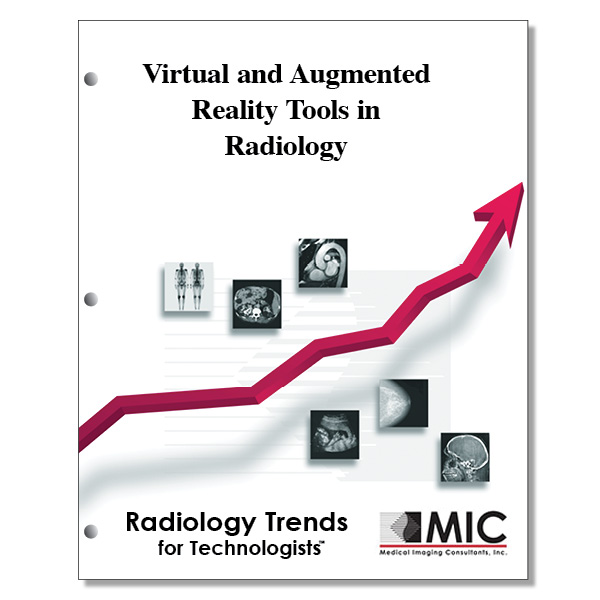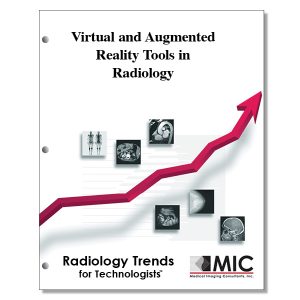

Virtual and Augmented Reality Tools in Radiology
A review of how VR and AR can be used in training, communication, and clinical care in radiology.
Course ID: Q00587 Category: Radiology Trends for Technologists Modalities: Cardiac Interventional, CT, Mammography, MRI, Nuclear Cardiology, Nuclear Medicine, PET, Radiation Therapy, Radiography, Sonography, Vascular Interventional2.25 |
Satisfaction Guarantee |
$24.00
- Targeted CE
- Outline
- Objectives
Targeted CE per ARRT’s Discipline, Category, and Subcategory classification for enrollments starting after January 27, 2023:
Registered Radiologist Assistant: 2.25
Safety: 2.25
Patient Safety, Radiation Protection, and Equipment Operation: 2.25
Outline
- Introduction
- Fundamentals of VR and AR
- VR Overview
- AR Overview
- Interacting with VR and AR
- Applications of VR and AR for Education and Training
- Applications of VR and AR for Diagnostic Radiology Education
- Applications of VR and AR for Interventional Radiology Education
- Applications of VR and AR for Medical Students
- Applications of VR and AR for Educating Residents and Fellows
- Applications for Attending Staff Training
- Communicating with Radiology Colleagues, Referring Clinicians, and Patients
- Communicating with Referring Physicians
- Communicating with Patients
- Aiding in Interventional Radiology Procedures
- Limitations of AR and VR
- Conclusion
Objectives
Upon completion of this course, students will:
- know what subjects are more efficiently taught using live presentations
- be familiar with the drawbacks of VR and AR
- know another name for angle of disparity
- understand why a smartphone can generate a stereoscopic view
- know the fields in which VR and AR have already been successfully adopted
- know what can happen when a VR participant loses awareness of ambient reality
- understand the potential uses of VR and AR in the radiology department
- know the results of investments in VR by Sony and Google
- know which method of creating an immersive environment is the least time intensive to create
- know which method of creating an immersive environment is a hybrid of two other methods
- be familiar with the types of AR devices
- know what kind of tracking in VR is responsible for the virtual point-of-view
- be familiar with the devices used for hand-tracking
- understand the type of feedback that returns a force to the user enabling them to touch virtual entities and perceive their shape
- know which interventional radiology procedures are available to learn from the smartphone app Touch Surgery
- understand what “telepresence” refers to
- be familiar with what VR training allows surgeons to do
- know how VR and AR, along with virtual or 3D printed models, can benefit patients
- be familiar with the adverse reactions from prolonged use of head-mounted VR or AR displays
- know the technical innovations that will be needed to allow AR and VR technologies to continue to redefine procedural planning and patient engagement
